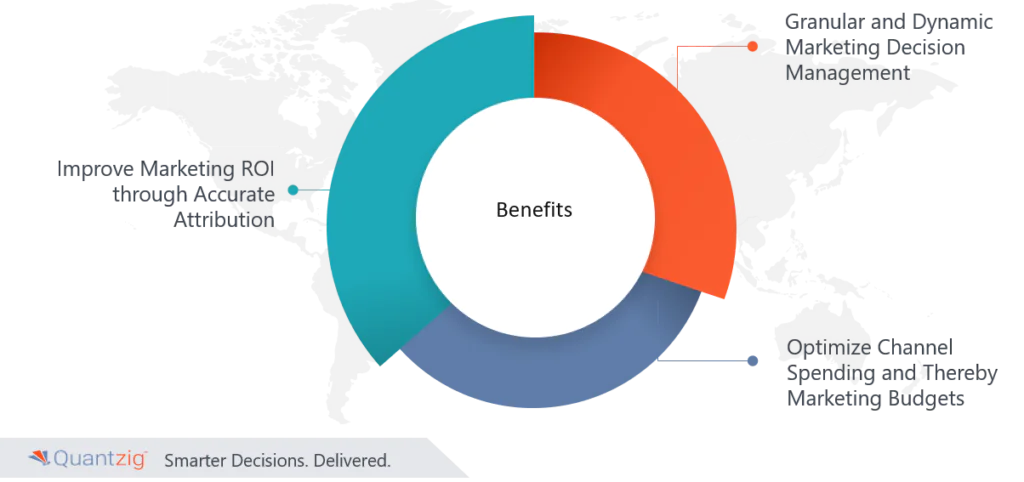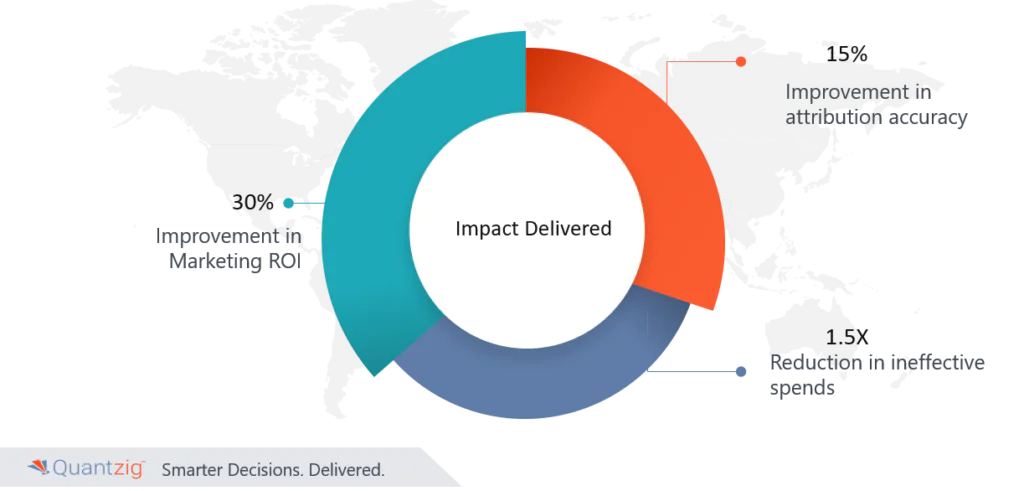Written By: Sudeshna Ghosh
Table of Contents
Introduction
In the relentless pursuit of market dominance and customer engagement, the quest for marketing optimization has emerged as a strategic imperative for businesses of all sizes and industries. The article delves deep into the strategies, data-driven insights, and innovative technologies that are reshaping the marketing landscape as we know it. In this exploration, we embark on a captivating odyssey, navigating through the ever-evolving realms of consumer behavior, digital transformation, and disruptive market forces. As we traverse these pathways, we unearth the hidden treasures of knowledge, innovation, and creativity that hold the key to unlocking marketing’s full potential. Join us on this exhilarating voyage, as we decode the strategies and tactics that empower businesses not just to survive, but to thrive, in an era where marketing optimization is the compass guiding the way to unprecedented success.
Book a demo to experience the meaningful insights we derive from data through our analytical tools and platform capabilities. Schedule a demo today!
Request a Free DemoWhat is marketing optimization?
Marketing optimization refers to the systematic process of refining and enhancing marketing strategies and tactics to achieve maximum efficiency and effectiveness in reaching the target market and generating desired outcomes. It involves leveraging a diverse array of digital marketing tools, including Global Positioning System (GPS), online advertising, social media marketing, refine your marketing process, and email campaigns, while utilizing insights from digital information sources such as website analytics and Global Positioning System (GPS) data. By analyzing factors like website traffic, time spent on webpages, and return on ad spend (ROAS), businesses can fine-tune their marketing efforts to improve performance and drive revenue. The marketing optimization process encompasses continuous refinement based on competition analysis, customer satisfaction metrics, and the digital marketing lifecycle, ensuring that marketing activities align closely with evolving market dynamics and customer preferences to achieve optimal results.
Benefits of Marketing Optimization:

In today’s fast-paced digital landscape, effective marketing strategies are essential for businesses striving to stay ahead of the competition. Leveraging a plethora of digital marketing tools and insights, from online advertising and social media marketing to email campaigns and website analytics, companies aim to capture the attention of their target market while maximizing returns on their ad spend (ROAS). However, achieving these goals requires more than just deploying various marketing tactics—it demands a strategic approach that continuously refines marketing efforts to enhance performance and drive revenue. This is where marketing optimization comes into play, offering businesses the opportunity to refine their processes, improve customer satisfaction, and ultimately, achieve greater success in the ever-evolving digital marketplace.
1. Improve Marketing ROI through Accurate Attribution:
Accurate attribution is the cornerstone of effective marketing optimization. It involves identifying and understanding the specific touchpoints and channels that contribute to conversions and revenue generation. By dissecting the customer journey, businesses can allocate marketing resources more intelligently. This precision enables companies to identify high-impact strategies and eliminate or refine less effective ones. Consequently, marketing efforts become more efficient, and ROI increases. When you can attribute a sale or conversion to a specific marketing touchpoint, you gain invaluable insights into what’s working and what isn’t, allowing you to allocate resources more effectively and maximize returns on investment.
2. Granular and Dynamic Marketing Decision Management:
Marketing optimization requires a granular approach to decision-making. It entails breaking down marketing strategies into small, manageable components and continuously analyzing their performance. By doing so, businesses can make dynamic adjustments in real time. This flexibility is crucial in today’s fast-paced digital landscape where consumer behaviors and market trends can change rapidly. Granular decision management allows marketers to adapt their strategies swiftly, seize opportunities, and address challenges as they arise. It ensures that marketing efforts remain aligned with the ever-evolving needs and preferences of the target audience, ultimately leading to more effective campaigns and increased competitiveness.
3. Optimize Channel Spending and Thereby Marketing Budgets:
Optimizing channel spending involves allocating resources to the most effective marketing channels. By analyzing data and performance metrics, businesses can identify which channels yield the best results and which ones may not be delivering the desired outcomes. This optimization not only improves the efficiency of marketing efforts but also allows for better allocation of marketing budgets. By shifting resources towards high-performing channels and reducing investments in underperforming ones, businesses can make the most of their marketing budgets. This not only enhances the return on investment but also ensures that every dollar spent contributes to achieving business objectives.
4. Maximized Return on Ad Spend (ROAS):
By leveraging digital information and employing online advertising, social media marketing, email marketing, and other marketing tools, businesses can strategically allocate their resources to reach their target market more effectively. Through continuous refinement of marketing tactics and the Internet Marketing Optimization Process, companies can enhance their marketing performance, leading to higher ROAS. This optimization process involves analyzing website traffic, monitoring time spent on webpages, and evaluating revenue earned, ensuring that marketing strategies are finely tuned to generate the best possible returns.
5. Enhanced Customer Satisfaction:
The Digital Marketing Lifecycle allows businesses to adapt to changing market dynamics and customer preferences swiftly. By refining the marketing process based on competition analysis and GPS insights, companies can tailor their marketing campaigns to resonate with their target market more authentically. Social media marketing and email marketing play crucial roles in engaging customers directly, fostering stronger relationships and improving customer satisfaction. Additionally, the Marketing Optimization Process ensures that marketing efforts are continuously improved to meet customer needs and expectations, ultimately driving higher levels of satisfaction and loyalty.
6. Optimizing Marketing Performance for Enhanced Revenue Growth
One significant benefit of marketing optimization is the ability to enhance marketing performance and increase revenue earned through strategic refinement of processes. By implementing the Internet Marketing Optimization Process, Global Positioning System (GPS), and the Marketing Optimization Process, businesses can systematically analyze and improve their marketing strategies. Through continuous evaluation and adjustment, companies can refine their marketing process to better align with consumer behavior and market trends, ultimately leading to improved marketing performance and higher revenue earned. This iterative approach allows organizations to stay competitive in the ever-evolving digital landscape while maximizing their return on investment.
In summary, marketing optimization is essential for businesses looking to maximize their marketing ROI, make agile decisions, and make the most of their marketing budgets. It’s a strategic approach that empowers businesses to thrive in a highly competitive and ever-changing marketing landscape.
Experience the advantages firsthand by testing a customized complimentary pilot designed to address your specific requirements. Pilot studies are non-committal in nature.
Request a Free PilotHow can you effectively optimize your business marketing efforts?
1. Utilize Comprehensive Data Analysis:
Begin by harnessing digital information from various sources, such as website analytics and GPS insights, to gain a comprehensive understanding of consumer behavior and market trends. Analyze metrics like website traffic and time spent on webpages to identify patterns and preferences within your target market. By leveraging these insights, you can refine your marketing tactics, focusing your online advertising and social media marketing efforts on channels and content formats that resonate most with your audience. Continuously monitor return on ad spend (ROAS) to assess the effectiveness of your strategies and make data-driven adjustments accordingly, ensuring optimal resource allocation.
2. Embrace Targeted Campaigns Across Platforms:
Develop targeted marketing campaigns tailored to specific segments of your audience based on their demographics, interests, and geographic location. Implement personalized email marketing campaigns that speak directly to the needs and preferences of your subscribers, leveraging segmentation and automation tools to deliver relevant content at the right time. Additionally, harness the power of social media marketing to engage with your audience on platforms where they spend the most time. By strategically deploying online advertising across multiple platforms, including search engines and social media channels, you can maximize your reach and ROAS while effectively competing for the attention of your target market.
3. Optimize Customer Journey and Experience:
Focus on enhancing the customer journey and experience at every touchpoint, from initial awareness to post-purchase engagement. Utilize the digital marketing lifecycle framework to guide your efforts, ensuring that each stage of the customer journey is optimized for maximum impact. Implement strategies to improve website usability and navigation, optimizing landing pages to encourage conversions and minimize bounce rates. Incorporate location-based marketing tactics, leveraging GPS data to deliver hyper-targeted messaging and promotions that resonate with local audiences. By prioritizing customer satisfaction and continuously refining your marketing processes, you can foster stronger relationships with your audience and drive long-term loyalty and revenue growth.
4. Monitor Performance and Iterate Strategically:
Establish key performance indicators (KPIs) aligned with your marketing objectives, such as conversion rates, customer acquisition costs, and revenue earned. Regularly monitor these metrics to evaluate the effectiveness of your marketing efforts and identify areas for improvement. Implement a systematic approach to marketing optimization, utilizing the Internet Marketing Optimization Process to analyze data, refine strategies, and iterate iteratively. Continuously benchmark your performance against competitors, leveraging competition analysis to identify emerging trends and opportunities for differentiation. By embracing a culture of continuous improvement and strategic iteration, you can optimize your marketing efforts and refine Your Marketing Process to achieve long-term success in the ever-evolving digital landscape.
5. Utilize Analytics and Automation Tools:
To effectively optimize your business marketing efforts, leverage automation opportunities to streamline processes and enhance efficiency. By integrating automation tools into your marketing strategy, you can track visitor behavior and browsing paths on your website, allowing you to tailor lead nurturing emails and retargeting campaigns based on visitor browser and device preferences. Implement lead score systems to prioritize prospects and allocate resources effectively, boosting sales force productivity and close rates. Additionally, leverage inbound communications data, time since conversion, website behavior, and online surveys to gather insights and refine your messaging for new users and visitors. Regularly analyze campaign and referring URLs to determine the most profitable channels and adjust your strategies accordingly.
Stay updated with the latest trends in celebrities, entertainment, and news outlets to capitalize on potential partnership or sponsorship opportunities that align with your brand. Ensure seamless communications between marketing, sales force, and other departments to maintain synergy in your efforts. Employ advanced techniques for lead distribution to ensure leads are promptly and effectively assigned to the appropriate sales personnel. This comprehensive approach enables you to maximize profit while fulfilling responsibilities to both your audience and stakeholders.
Challenges/Problems faced while implementing Marketing Optimization:
1. Poor CTR, CPC, and Conversions for Digital Spends:
One of the primary challenges faced in marketing optimization is achieving satisfactory Click-Through Rates (CTR), Cost-Per-Click (CPC), and conversion rates for digital advertising campaigns. Low CTR suggests that the ad creative or targeting may not be resonating with the target audience, leading to wasted ad spend. A high CPC can quickly erode marketing budgets, especially if it doesn’t translate into meaningful conversions. Furthermore, if conversion rates are subpar, it indicates that the landing page experience or the overall customer journey needs improvement. Addressing these issues requires a deep understanding of audience segmentation, ad targeting, ad copy optimization, and continuous A/B testing to refine campaigns.
2. Ineffective Offline Spending and Low ROI:
Optimizing offline marketing spending, such as print media, billboards, or events, presents its own set of challenges. Measuring the ROI for offline activities can be complex compared to digital channels. Without accurate data and attribution models, it’s challenging to determine which offline initiatives are driving results. Companies often face difficulty in tracking offline customer journeys and understanding how these interactions contribute to conversions. Solving this problem requires innovative tracking methods like QR codes, custom landing pages, or unique phone numbers. Additionally, businesses should implement comprehensive CRM systems to integrate offline and online customer data, allowing for a more holistic view of customer interactions and attribution across various touchpoints.
3. Inaccurate Marketing Attribution:
Marketing attribution, especially in the multi-channel and multi-device digital landscape, is a persistent challenge. Inaccurate attribution can result in misallocated budgets, as it may not give credit to the channels or touchpoints that genuinely influence conversions. Often, the last-click attribution model is used, which oversimplifies the customer journey and neglects earlier touchpoints that played a significant role in the decision-making process. Implementing accurate attribution models, such as multi-touch attribution, requires advanced data analytics and technology. It involves tracking and assigning value to each interaction throughout the customer journey, providing a more nuanced understanding of how marketing channels work together to drive results. Achieving accurate attribution is crucial for optimizing marketing efforts, refine Your Marketing Process, and maximizing ROI by allocating resources where they have the most impact.
How can you measure your marketing performance?
Measuring marketing performance is crucial for businesses to assess the effectiveness of their strategies and optimize their efforts for maximum impact. Here are four key pointers on how to measure marketing performance effectively:
1. Utilize Comprehensive Data Analytics:
Employ advanced analytics tools like Google Analytics to track various metrics such as bounce rate, pages viewed, and web sessions. Analyzing visitor behavior, browsing paths, and campaign response data provides valuable insights into the effectiveness of marketing campaigns and the overall online presence. By leveraging these analytics, businesses can make data-driven decisions to optimize their marketing strategies for better ROI and attract new customers.
2. Monitor Conversion Metrics and ROI:
Measure the return on investment (ROI) by tracking the cost of ads against generated revenue. Utilize tools like Google Analytics to monitor conversion metrics such as lead generation, customer acquisition, and sales revenue. By understanding the cost per visit and cost per lead, businesses can assess the efficiency of their marketing efforts and allocate resources strategically to target audiences more effectively, whether it’s in the West Coast, East Coast, or other geographic locations.
3. Implement Automation for Performance Optimization:
Leverage automation tools such as Mailchimp for email automation, campaign scheduling, and customer journey automation. By automating repetitive tasks and workflows, businesses can streamline processes and focus on generating new leads and engaging with the target audience across various platforms. Automation also enables personalized interactions with customers, enhancing their experience and driving brand awareness and team morale.
4. Continuously Refine Strategies Based on Performance Metrics:
Regularly review and analyze response rates, visitor behavior, and engagement metrics to identify areas for improvement. Utilize optimization recommendations to refine marketing copy, landing pages, and advertising channels for better results. By monitoring brand awareness, team morale, and other qualitative factors alongside quantitative metrics, businesses can ensure a holistic approach to measuring marketing performance and driving sustainable growth.
5. Monitor Qualitative Indicators Alongside Quantitative Metrics:
Besides quantitative metrics, such as lead generation and ROI, pay attention to qualitative indicators like brand awareness and team morale. Monitoring these factors provides a holistic view of marketing performance and enables businesses to gauge the overall effectiveness of their strategies. By balancing quantitative data with qualitative insights, businesses can make more informed decisions and drive sustainable growth over time.
Quantzig’s Success Story
Client Details:
A leading spirit manufacturer operating business activity in the UK and Europe
The challenges faced by the Client:
The client confronted several significant challenges in their marketing efforts that necessitated a strategic overhaul. Firstly, they struggled with poor Click-Through Rates (CTR), Cost-Per-Click (CPC), and conversion rates for their digital advertising campaigns. Low CTR indicated that their ad creatives or targeting strategies were failing to engage the intended audience effectively, resulting in wasted ad spend. Meanwhile, high CPC indicated inefficiencies in their advertising budget allocation, as the cost of acquiring each click was high relative to the conversion rate. Furthermore, subpar conversion rates implied issues with the overall customer journey, from ad exposure to post-click interactions, requiring a comprehensive review of landing pages and campaign optimization strategies.
Additionally, their offline marketing efforts, such as print media, billboards, and events, were yielding low Return on Investment (ROI). Measuring the ROI for offline activities proved challenging due to the lack of accurate data and attribution models. This made it difficult to determine which offline initiatives were truly driving results, leading to suboptimal resource allocation.
Lastly, the client faced the dilemma of inaccurate marketing attribution. Their existing attribution models often employed simplistic last-click attribution, which failed to account for the complexity of the customer journey in a multi-channel, multi-device digital landscape. This resulted in misallocated budgets, as credit was disproportionately assigned to the last touchpoint, neglecting the critical role of earlier interactions in influencing conversions. To address these challenges, the client needed a comprehensive marketing strategy that encompassed both digital and offline efforts, accurate attribution models, and a data-driven approach to decision-making.
Solutions offered by Quantzig:
- Unified Marketing Decision Management Framework:
Quantzig implemented a unified marketing decision management framework for the client, which provided a centralized platform for budget allocation and operational planning. This solution enabled the client to streamline their marketing efforts by consolidating data from various channels and touchpoints. It allowed for real-time monitoring of campaign performance and resource allocation, ensuring that marketing budgets were optimized for maximum impact. This unified framework facilitated data-driven decision-making, enabling the client to make informed choices regarding marketing strategies and tactics.
- Spends Re-Channeling Recommendations:
Our expertise in data analysis and machine learning enabled them to provide the client with spending re-channeling recommendations. By analyzing historical data and campaign performance metrics, Quantzig identified underperforming channels and suggested reallocating resources to higher-performing ones. This optimization marketing strategy led to a significant improvement in ROI as marketing budgets were directed towards channels that delivered better results. The client experienced enhanced efficiency in their marketing spending, resulting in a more effective allocation of resources and improved campaign performance.
- Marketing Operations Simulator:
Our team introduced a marketing operations simulator that allowed the client to simulate various marketing scenarios and strategies. This simulation-based approach helped the company assess the potential outcomes of different marketing initiatives before implementation. It provided valuable insights into the expected ROI, customer engagement, and overall impact of each strategy, enabling the company to make data-driven decisions and prioritize high-value campaigns.
- Programmatic Buying Algorithm:
We developed a programmatic buying algorithm tailored to the client’s specific needs. This algorithm automated the process of purchasing digital advertising inventory, optimizing bids in real time based on performance data and audience insights. As a result, their programmatic advertising campaigns became more efficient and cost-effective, with improved targeting and higher CTR. The algorithm contributed to enhanced ROI and better utilization of digital advertising budgets.
Quantzig’s holistic approach to marketing optimization empowered the client to overcome their challenges effectively. By leveraging data-driven solutions and advanced algorithms, we enabled them to achieve improved marketing ROI, efficient budget allocation, and enhanced campaign performance, ultimately leading to sustainable business growth.
Get started with your complimentary trial today and delve into our platform without any obligations. Explore our wide range of customized, consumption driven analytical solutions services built across the analytical maturity levels.
Start your Free TrialImpact Delivered:
The results of implementing these solutions were remarkable:

- 30% improvement in Marketing ROI
- 15% improvement in attribution accuracy
- 1.5X reduction in ineffective spends
Conclusion
In the realm of marketing, where precision and adaptability are paramount, “Exploring the Pathways to Marketing Optimization” has unveiled the secrets to success. As we draw the curtains on this enlightening journey, it becomes evident that marketing optimization is not merely a choice but an imperative for thriving in today’s dynamic landscape. By embracing accurate attribution, astute decision-making, and resource allocation aligned with performance metrics, businesses can unlock their marketing potential. These pathways are the conduits to sustained growth and relevance in an ever-evolving market. The future beckons, and armed with these insights, enterprises are poised to not just survive but to truly thrive.



